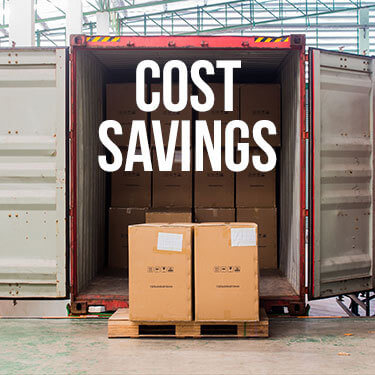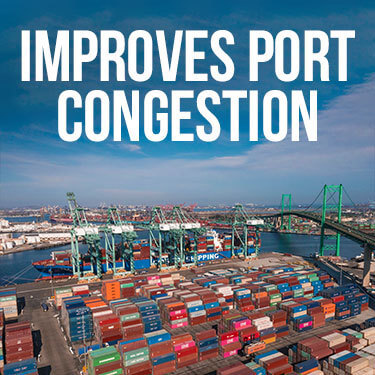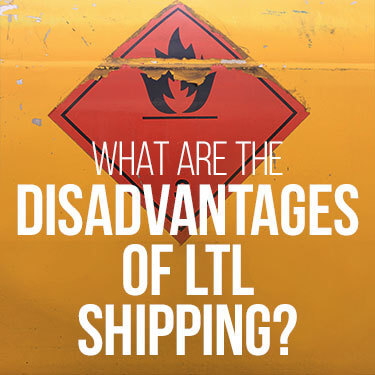The benefits of LTL shipping for any length of haul are becoming more obvious as its popularity rises. Rising shipping expenses for fuel combined with driver shortages have made LTL, or Less-Than-Truckload, shipments ideal for businesses and carriers. With the backing of organizations such as the National Motor Freight Traffic Association (NMFTA), LTL has become standard for many. Exploring LTL shipping further reveals benefits to this method that you can take advantage of.
Less-Than-Truckload (LTL) shipping is not new to the logistics industry. New improvements in technology have increased the available benefits of LTL shipping, such as:
Explore these benefits in-depth and see how they can impact all kinds of businesses.
If you have to ask, “What does LTL shipping mean in the first place?”, you’ve come to the right place.
When individuals or companies need to ship heavy or large freight (something over 150 pounds) but don’t need a full-sized trailer, LTL carriers step in. This service allows multiple small packages to be shipped together on the same truck.
If you aren’t sure whether or not you need shipping services, check out our article, “When Do I Need Commercial Freight Shipping?”
The carrier then has the truck deliver each piece of LTL freight to its next destination. It could be another warehouse, a store, or someone’s house. It would depend on the type of freight and on which services are available from your chosen carrier.
Shipping needs vary from business to business. In looking at LTL options, you can see for yourself the benefits that many different companies can benefit from.

Fuel costs often represent a big part of a shipping company's budget. Carriers want to make sure that the cost of transporting freight doesn’t go beyond what customers are charged. In simpler words, they don’t want to lose money on shipments.
Rather than force customers to pay for every shipment as though it was Full Truckload (FTL) freight, carriers arrange for smaller loads to share trailer space. With that arrangement, the costs associated with FTL shipping can be divided among several customers making it more affordable for all parties involved.
As a business, you avoid paying for space that you aren’t using. Depending on what the company is shipping, you can further enhance your cost savings by packaging for density. LTL carriers use a freight class system where compact and dense shipments ship for less.
The freight class system uses NMFC (National Motor Freight Classification) codes to standardize pricing rates for specific commodities. Anyone can use the freight class system to estimate the shipping price and then package accordingly when possible.
Shipping smaller freight may also save you money on warehousing expenses. Rather than maintain a large warehouse for overstock, smaller shipments can be set up to re-stock based on average consumption. The more consumable the item, the more frequently you can arrange for shipping.

Truckload shipping for multiple customers at a time has caused carriers to elevate the technology they use to track pick-ups and deliveries for all their shipments.
Customers benefit from these technology enhancements by being able to track their goods from pick up to final delivery. Many carriers will offer live, automatic updates on the location of your shipments.
With this information, companies can better plan for the other supply chain logistics.
Advances in technology have allowed the shipping industry to become more efficient as a whole. Planning shipments from multiple companies is not only possible but can be done in a way that saves both time and money.
LTL shipments tend to get handled more frequently than similar items transported through FTL carriers. To compensate for this, better packaging materials are offered by some carriers.
Proper packing helps protect shipments during transport and off-loading.
Taking the time to package shipments means that all freight is more likely to arrive free from damage.
Consolidating small shipments that don’t require a full trailer means fewer trucks need to be on the road. When calculated across multiple shipments and carriers, fuel savings add up quickly. Fewer trucks mean less fuel consumption and fewer greenhouse gas emissions throughout the industry.
The number one gas emitted by fuel-burning vehicles is carbon dioxide (CO2). Many studies have shown that increasing amounts of CO2 may have a dangerous impact on air quality and people’s health.
Fewer trucks can make a big difference in the long term and short term. The average freight trailer weighs is 74,000 pounds (37 tons) with a full load. Using distance and emission factor, it is possible to calculate the average amount of greenhouse gases, such as CO2, that are released per trip.
Greenhouse Emission Calculation
| Distance | Emissions Factor* (measured in grams) | Total Emissions (converted to metric tons) |
| 500 miles | 1,625.00 (LTL Dry Van) | 0.81 metric tons |
| 500 miles | 1,700.00 (Truck-load Dry Van) | 0.85 metric tons |
| 2000 | 1,700.00 (Truck-load Dry Van) | 3.4 metric tons |
On average, LTL shipping methods are believed to release fewer emissions. This may take into account factors such as weight which may decrease as deliveries are made. An FTL freight delivery going the same distance is likely to release more emissions.
Suppose an LTL carrier is holding shipments from four companies that would have otherwise paid for FTL services. Four trucks would equal 2,000 miles traveled and increase the average amount of CO2 released.
While on paper, the numbers may not be too significant, multiply those numbers across the over 3 million truck drivers in the United States covering thousands of miles a year and you have millions of tons of emissions. Even a small reduction makes an impact.
With FTL shipping there is the benefit of knowing yours is the only cargo on board, and that it will be going directly to one destination. Transit time may be better since no stops are being made. If you want customized shipping, like different drop-off locations, it's best to go with LTL shipping.
The same features that make LTL shipping able to take on multiple customers at once allow for multiple shipping options. Some of these shipping options come with a hefty price tag, but depending on your needs, it may be the best and only option you are left with.
Specific options vary from carrier to carrier, but there are some standards.
Business shipping needs to grow and change with time. Using LTL shipping often provides a cost-effective option for small and medium businesses to still get goods out to customers or even larger retail centers.

We can’t talk about the benefits of LTL shipping without mentioning port congestion. The worst of the congestion issues seem to be behind us, but there are still thousands of containers sitting in ports across the U.S. that haven’t made it to their final destinations.
LTL shipments can help relieve port congestion by taking out just your part of a container. As with overland trucks, shippers can pay for LCL (Less Than Container Load) when shipping from overseas.
If you only need part of what is in a container, there isn’t much sense in waiting for the entirety of it to be delivered to a local warehouse. You can use LTL shipping to get the goods directly from the port.
As part of an ongoing effort to relieve congestion, fees aimed at reducing night and weekend working, such as Pier Pass fees, have been removed. These originally needed to be paid by truck drivers and carrier services to enter the port.
LTL services can be combined with others to keep your freight moving and avoid paying storage fees at ports. Drayage services can also get goods out of port and into a transload or cross docking warehouse for easier transfer onto LTL trucks.

There are limits to what LTL can offer. In some instances, it might also be more cost-effective to go with FTL shipments.
Out-of-gauge (OOG) cargo that can’t be easily palletized or that takes up an awkward amount of space in a trailer may be denied LTL status. The same can be said of shipments that don’t fit within the trailer. You may need flatbed services not offered by most LTL carriers.
Materials that may not be accepted as LTL cargo include:
The items above usually require specialized transport. Regulations for these items are in place to ensure everyone’s safety, as well as the security of the goods themselves.
Finally, your business may grow to the point where you need FTL carrier services. This is actually a good problem to have, as it shows your business is successfully expanding. Either way, you can continue to utilize LTL for re-stocking items that don’t have as high a demand as others.
Enjoy the benefits of LTL shipping with USA Truckload, powered by R+L Global Logistics. We’ve been in the trucking industry for over 50 years and have hauled freight of all sizes and weights.
Our experienced staff can help you find the LTL services that best suit your needs. For when you need something a little more, we offer a variety of transport services.
Get in touch now by calling us at (866) 353 - 7178, or get a quote online by giving us an estimate of your current shipping needs.
R+L Global Logistics
315 NE 14th St., Ocala, FL 34470